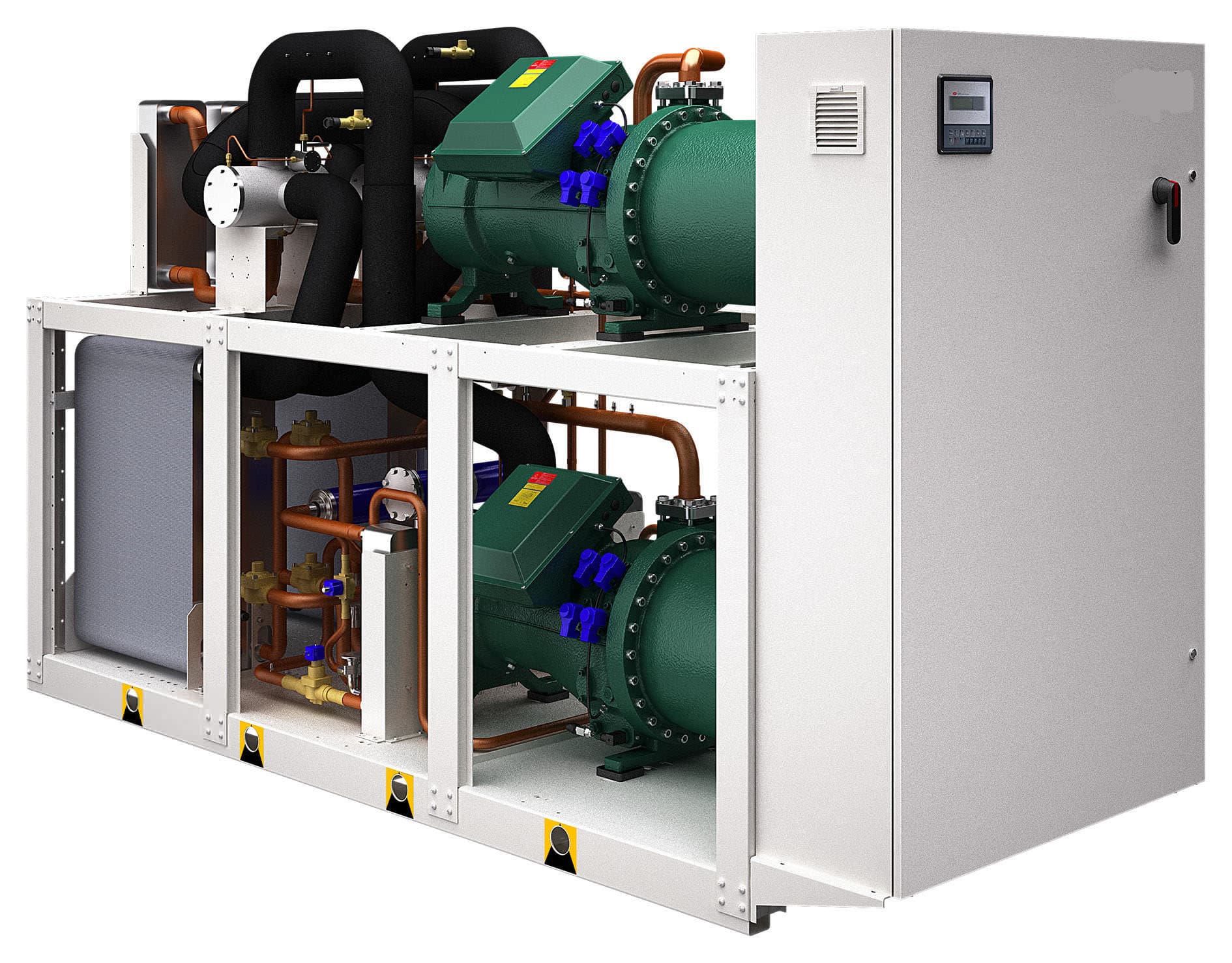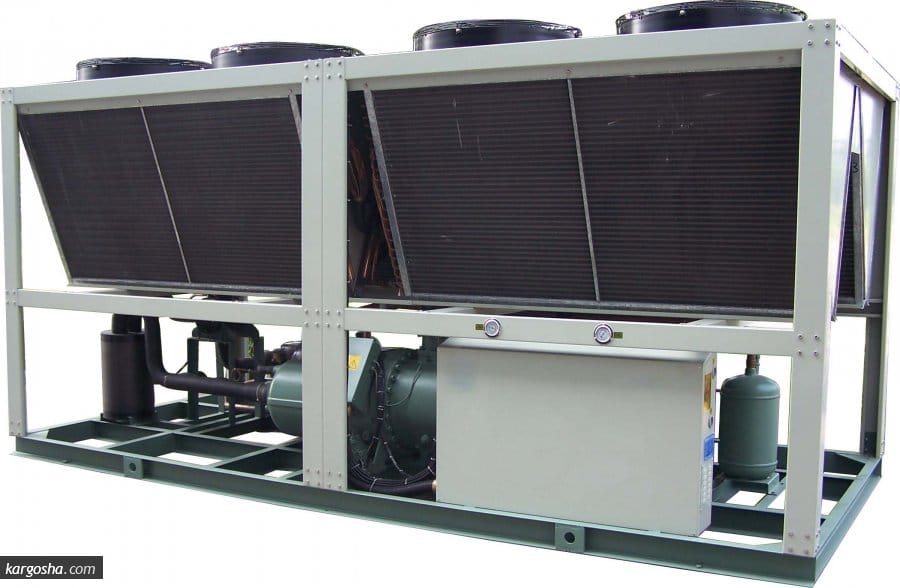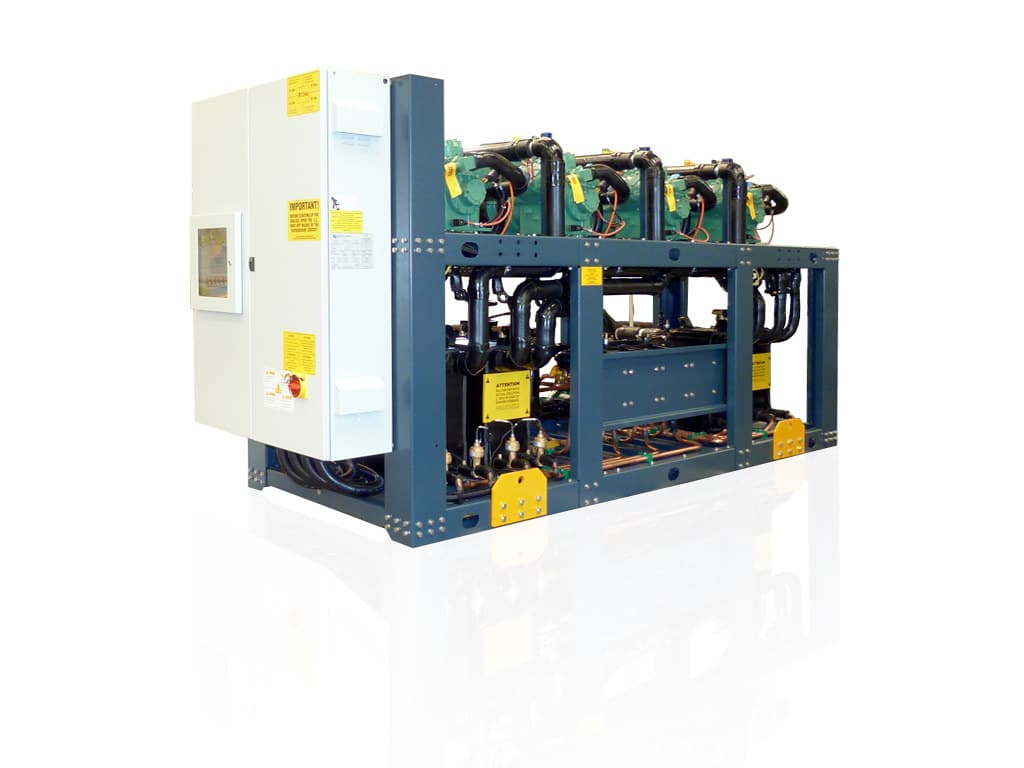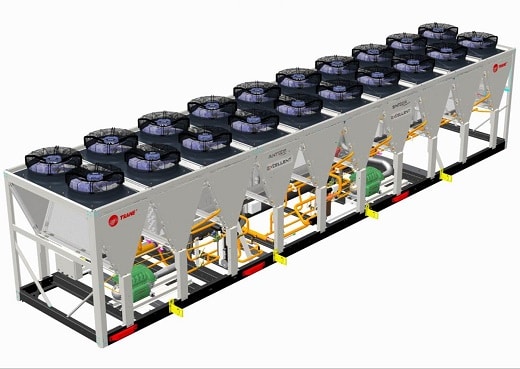Chiller
Chiller is a device that removes heat from a liquid (usually water) based on the vapor compression or absorption refrigeration cycle. This fluid can be used for air cooling or devices that typically flow in a cycle and into a heat exchanger. What are the chillers, types of absorption chiller and compression chiller? Chiller as an important lateral product, heat that is absorbed from the liquid must either be excreted or used for higher efficiency for thermal purposes. There are concerns about the design and selection of the chiller. These concerns include efficiency, repair and maintenance, and environmental vulnerabilities.
Chiller types
Chillers are divided into two categories: compressive chiller and absorption chiller. Another type of chiller division is based on the form of refrigerant cooling, which is divided into three categories: cool water, cool air, and evaporative cooling.
Compressing chiller using electric energy and absorption chiller using thermal energy cause refrigeration and cold.
Compression Chiller
In a compression chiller, the gas is first compressed by the compressor, the gas is entered the condenser which is then cooled water or ambient air, and converted to liquid. This fluid enters the coolant (evaporator) by passing through the expansion valve or capillary tube which is in a lower pressure, this pressure reduction causes the evaporation of the liquid and, as a result, the coolant fluid by taking its evaporation heat from the cooling medium, causes cooling in materials which are associated with the cooling part. The evaporated gas is then transferred to the compressor.
By passing steam, condenser air is suctioned rapidly in a path. The vacuum in the condenser is caused by the conversion of steam into water and the volume difference between steam and water.
Types of compression Chillers
• Reciprocating compression chiller
• Screw compression chiller
• Scroll compression chiller
• Centrifuge
Structure of Compression Chiller
Electromotor: Crankshaft moves the compressor The rotary crankshaft motion causes the piston to reciprocate inside the cylinder, thus the refrigerant gas is condensed in the compressor.
Coupling: Coupling electro motor with compressor crankshaft.
Compressor: Compresses the gas from the evaporator and enters into the condenser.
Delivery tube: Directs the gas from the compressor to the condenser
Condenser: The condenser of this chiller is a shell and tube type inside the refrigerant gas crust and flows inside the cool water tubes. Hot and dense gas enters the condenser crust by the tube. Due to contact with copper tubes containing cool water, the coolant becomes liquid and exits from the bottom through the tube. The flowing water enters the condenser through the tube and exits through the tube. The water from the condenser is directed to the cooling tower to return to the condenser after cooling.
Refrigerant liquid outlet tube from condenser
Condenser service valve: Used to close the refrigerant outlet tube during service and repair and long stoppage of the device.
Refrigerant feeding valve: Used to charge the system.
Filter Driver or Humidifier Filter: Solids and moisture content in the cold storage cause problems that a device called the filter is used to capture solids and drivers used to capture moisture in the system.
Solenoid Valve: When the electric current is connected, it inhibits the refrigerant liquid passage; it is directed by the thermostat.
Visible glass or glass site: Determines the amount of refrigerant in the system as well as the excess moisture in the system.
Evaporator: After passing through the expansion valve, the refrigerant enters the chiller evaporator and evaporates in the copper tubes and vaporizes the evaporator. Evaporation in the evaporator causes cooling of the water in the crust. Cooled water flows from the site to the air conditioner and fan coils, and then enters to the chiller evaporator.
Thermostatic expansion valve: which is influenced by the temperature of the exhaust gas from the evaporator, it regulates the amount of refrigerant inlet to the evaporator.
Suction tube: The gas outlet from evaporator enters the suction part of the compressor through the tube.
Measuring and Pressure Control Panel: High pressure and low pressure manometers, low and high pressure control and oil pressure control are installed on it.
Procedure of Compression Chiller
The procedure of compression chiller is that the refrigerant fluid enters the tubes or the so-called evaporator that cools inside the room or the place we want to cool. The heat of room is transferred to the refrigeration fluid and fluid is evaporated as a result of taking heat and instead, the temperature of room comes down and it has the following conditions:
- The cooling tower water temperature should be 2 degrees Celsius.
• The return cooling tower water temperature should vary 5 degrees Celsius with initial temperature.
• Freon gas pressure in the compression chiller suction should be 45 to 75 Psi and delivery 200 to 260 Psi with a water condenser.
• When we want to inject gas, we have to close the service valve.
• When operating the chiller, all valves must be open. Suction – Delivery – Liquid.
• To turn on the chiller, first we turn on the tower fan, then the fan coil pump and then the tower pump.
• To vacuum the chiller, the chiller must be turned off.
• The machine must also be turned off to lubricate.
• The oil pressure should be at least 20 PSi higher than the suction pressure.
• The glass surface reflecting the refrigerant liquid should be smooth and free of foaming.
• The oil inside the compressor should be about 2/1 of the level of the oil glass and if it is less than 4/1 the glass level, supply the necessary oil.
• Acid is recommended for each chiller capacity 5.1 kg.
• The red gauge is used for high pressure and nitrogen testing.
• Blue (or green) gauge is used to lower pressure and vacuum the chiller.
• By the sea, the vacuum pressure should be 1.29 inches mercury and in Tehran to be 3 inches mercury.




